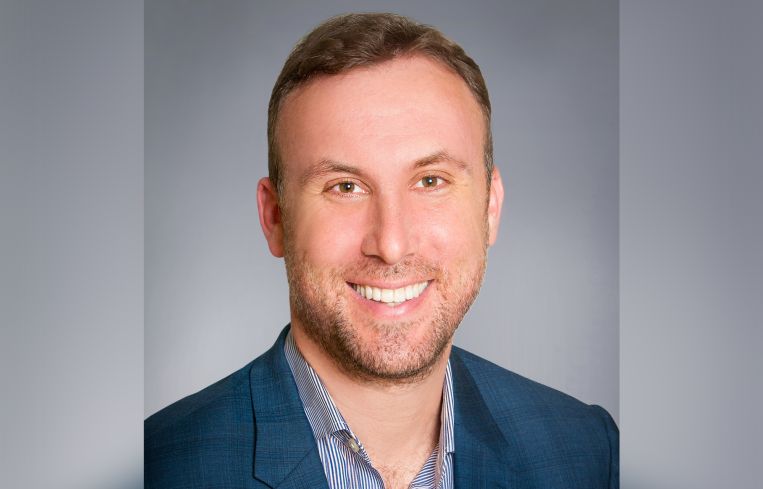Hudson Valley Property Group’s Jason Bordainick Shares Entrepreneurial Vision
The multifamily-focused firm has $4 billion in assets under management
By Brian Pascus July 28, 2025 6:30 am
reprints
Jason Bordainick is the co-founder and managing partner of Hudson Valley Property Group, a firm he started 15 years ago with his business partner and childhood friend Andy Cavaluzzi with the goal to professionalize and institutionalize affordable housing. The firm buys existing multifamily properties via federal and state capital affordable programs, then pairs those buildings that sit on government subsidies with private investment dollars to improve operations and physical conditions at the buildings.
Today Hudson Valley Property Group carries $4 billion in assets under management and has preserved or renovated 20,000 affordable housing units. The firm plans to launch a $600 million investment vehicle soon, which includes foreign investment dollars, which is a far cry from the early days when Bordainick and Cavaluzzi were asking friends and family members for money.
Commercial Observer caught up with Bordainick about a business career fueled by entrepreneurial instincts.
This conversation has been edited for length and clarity.
Commercial Observer: How did you get involved in commercial real estate?
Jason Bordainick: I’ve been an entrepreneur since I was in college. My first company started in a dorm room that helped students find places to live. I won a business-plan competition at University of Virginia and created an online platform and marketplace that linked students with places to live. We partnered with universities to create an outsourced, off-campus housing office that allowed students to secure and find places to live through online portals. It expanded from UVA across the country and ended up helping more than 3 million students find places to live and became the largest online marketplace before CoStar bought it. It’s called Offcampus Partners, and it’s still around under the CoStar family of companies along with Apartments.com.
What came next?
I left the day-to-day of that company after recruiting a leadership team, and went back and got my MBA at Stanford. I wanted to build something else. That experience of having a vision and piecing together an idea and bringing it to life was very rewarding, but I wanted to do that on a larger scale that would have even more of an impact, though I didn’t know what that would be. I worked on different businesses and got connected with my childhood friend Andy [Cavaluzzi], but not on something we thought would develop into a full-time job. It was a side project and we came together to buy a single property up in the Hudson Valley that was an eight-unit building.
This was in 2008, and we pieced together various sources of financing to turn a property that was blighted and not in the best condition into something that gave people nicer amenities and better units with heating and A/C. We really cleaned it up and felt really good about what we were delivering, but at the same time we were generating great returns for investors. We felt it was too good to be true: We had something that is profitable, but made us feel good.
How did you scale the business?
In the beginning, Andy and I wore lots of hats. We started in the basement of my childhood home, a bootstrap type of model, trying to figure out the business and find opportunities. It was challenging to be in the trenches but it brought us closer together. We learned about the Low-Income Housing Tax Credit program, which is the main source of financing to preserve these assets. It’s very complicated and you need to have a track record to get the comfort from investors and lenders. We had partners in the beginning to make that track record, but it was mainly just Andy and myself and a few interns.
Until we got some of these projects under our projects we didn’t start building, but piece by piece we’ve made the team and have people who have been with us for over 10 years now to create an amazing culture. It started with projects near New York and the tri-state area, but it was only once we transitioned to be more of an investment manager with ready capital to deploy that we scaled much faster to where we are today, nationwide and in 13 states.
How did you draw investment capital to your vision? What went into that?
Sometimes you see companies that go from zero to 60 miles per hour really fast, but ours is a true build-it-from-scratch story, where we were personally all in at the beginning. Our early investors were friends and family who believed in us and what we were doing. Today we have large endowments and foundations and banks, but in those early days we had individuals who wrote $10,000 checks, and those people have stayed with us, they continue to invest. It started as core friends and family, classmates, and it transitioned into family offices and folks who referred us to banks. But it moved into the institutional level once our funds became eligible for the Community Reinvestment Act, so an early investor was KeyBank, who got CRA credit [banks have requirements to invest in local communities].
We also have Nuveen who had already invested in the affordable space and carried an impact mandate. They were our big early investors, and it grew into more banks and insurance firms before we got the interest of endowments and foundations. Our latest vehicle is moving from U.S. investors into global sovereign wealth funds looking at this. It’s a pretty exciting time to see how we’ve transitioned.
What’s your successful strategy that makes it worthwhile to invest with you?
It’s a space that has been very mismanaged, so there’s value-add opportunities to better operate and finance the properties. There’s just a real opportunity if you know what you’re doing, and we have a platform that adds and creates value within real estate. There’s also barriers to entry, so there’s not many groups that have the combination of sophistication, capital and expertise in the space.
There’s also supply and demand — we have a multiyear waitlist for our average properties, with a stable cash flow stream, inflation protections because of long-term contracts. So we check all those boxes for investors who are looking for something that’s resilient, something that has predictable cash flow but is differentiated enough for someone to add value.
What’s the biggest misconception about your asset class?
The quality of the tenancy. This is really way more mainstream. [The typical resident in our buildings] is your average person working in hospitals, schools and retail. All the jobs that make a great city from social services to public services, especially in high-cost-of-living cities, qualify for affordable housing. So the majority of people in our country qualify for affordable housing, and 70 percent of our residents are seniors on affordable housing. Sometimes people go to our properties and think it’s senior housing, not affordable housing, but we run our properties well and they become high-quality places to live. Most people who go to our properties can’t distinguish them from a market-rate property and affordable.
What’s your best CRE investment advice?
At the end of day, when you go through this, it’s all about the quality of the real estate and making sure you have real estate that has demand and something you feel comfortable owning for a long run. Sometimes you might find opportunities that look good in the short term, but you have to think about all the properties you’re looking at from a physical side and location perspective that gives you lots of options down the road.
Regardless of the type of asset, you have to go back to the bare bones of what makes good real estate.
Brian Pascus can be reached at bpascus@commercialobserver.com



